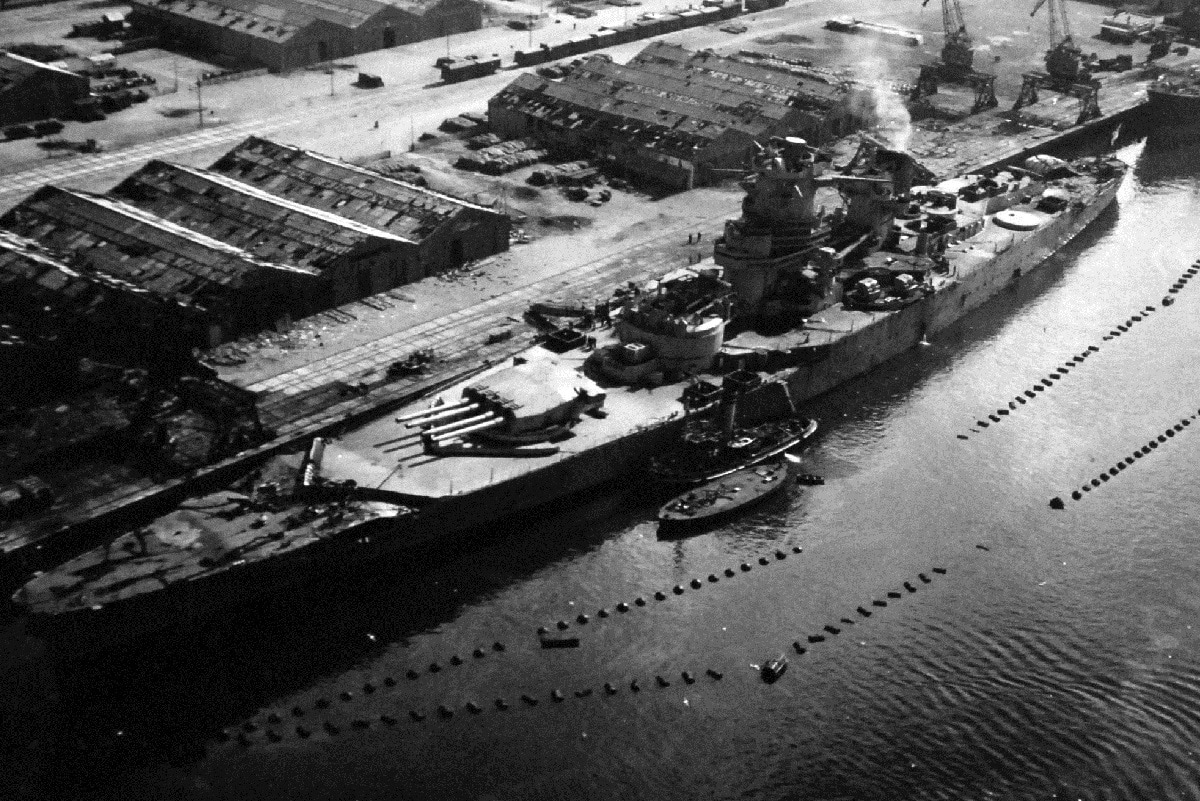Fearing a potential war with Fascist Italy, the French Third Republic responded to the Italian Navy’s (Regia Marina’s) Littorio-class of battleships with its own new class of powerful yet fast capital vessels. The result was the Richelieu-class, and while based on the previous Dunkerque-class – and include the same unconventional arrangement that grouped the main battery forward in two quadruple gun turrets – the new warships were larger and featured a much more powerful main battery of eight 380mm (15-inch guns).
Additionally, the warships were protected by increased armor.
The History
Four of the Richelieu-class battleships were laid down in the mid-1930s as the clouds of war were on the horizon. However, only the lead vessel was completed just after the war broke out. While the Richelieu eventually played a role in the conflict, the same wasn’t to be true for Jean Bart.
Launched in 1940, she was not completed when the warship was moved to Casablanca in June of that year to avoid capture by the Germans. At the time, only one of the battleship’s turrets out of a planned two was operational. A cargo vessel carried her second and still incomplete turret, which French authorities had planned to install at a later date – however, the cargo ship was sunk by a German submarine.
After arriving in Casablanca, the anti-aircraft guns on Jean Bart were removed to strengthen the defenses of the port. However, after the French defeat during the Battle of France, a proposal was made to move the Richelieu, Jean Bart and other warships to Oran to be demobilized. The Germans decided against it as it was feared the British would seize the ships. At the same time, the British military feared the French warships would be seized by the Germans, and that decision led to Operation Catapult, which involved a series of attacks on the French vessels that opted not to defect to the Free French.
Fearing an attack, Captain Pierre-Jean Ronarc’h prepared Jean Bart, and that included filling the incomplete turret with concrete, while the ship’s anti-aircraft battery was strengthened. Instead of heading out to sea, the battleship essentially operated as a stationary shore battery at Casablanca. She saw action during Operation Torch, the November 1942 American invasion of North Africa. During the naval engagement, the French warship was hit by a total of five aerial bombs as well shells from the USS Massachusetts. One of those shells struck the French vessel, and while it didn’t detonate, it jammed the turret and effectively put the Jean Bart out of action.
While she was subsequently repaired, much to the surprise of the American forces, the carrier USS Ranger dispatched dive bombers, which successfully struck and sank Jean Bart in the shallow water. When the Vichy French forces surrendered to the Allies, there were discussions about raising the ship and towing her to the United States to complete her construction. In the end, this didn’t happen and instead the battleship remained in Casablanca harbor until the end of the war.
After the ended, Jean Bart returned to France and she was completed in 1949. She participated in the Suez Canal Crisis in Egypt in 1956 yet so no combat. Put in the reserve fleet in 1957, she was then decommissioned in 1961 and sold for scrap at the end of the decade.
Jean Bart may not have played a crucial role during the Second World War, but had she fallen into the hands of the Germans or the Italians, she could have shifted the balance of power in the Mediterranean in favor of the Axis.
Peter Suciu is a Michigan-based writer who has contributed to more than four dozen magazines, newspapers and websites. He regularly writes about military small arms, and is the author of several books on military headgear including A Gallery of Military Headdress, which is available on Amazon.com.

